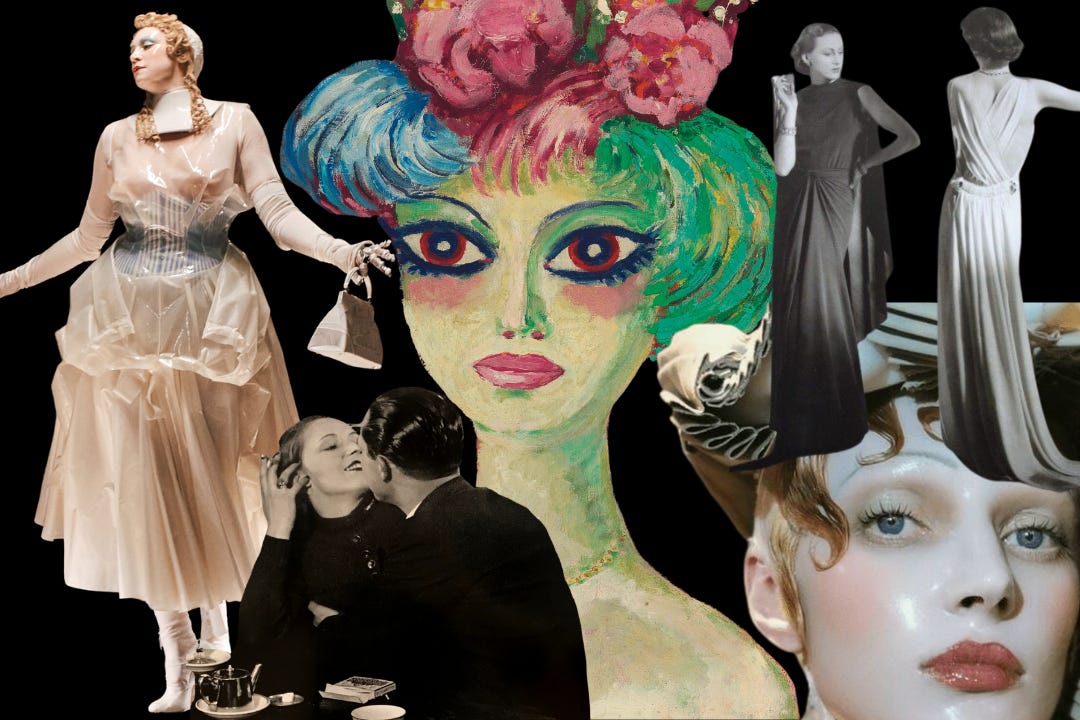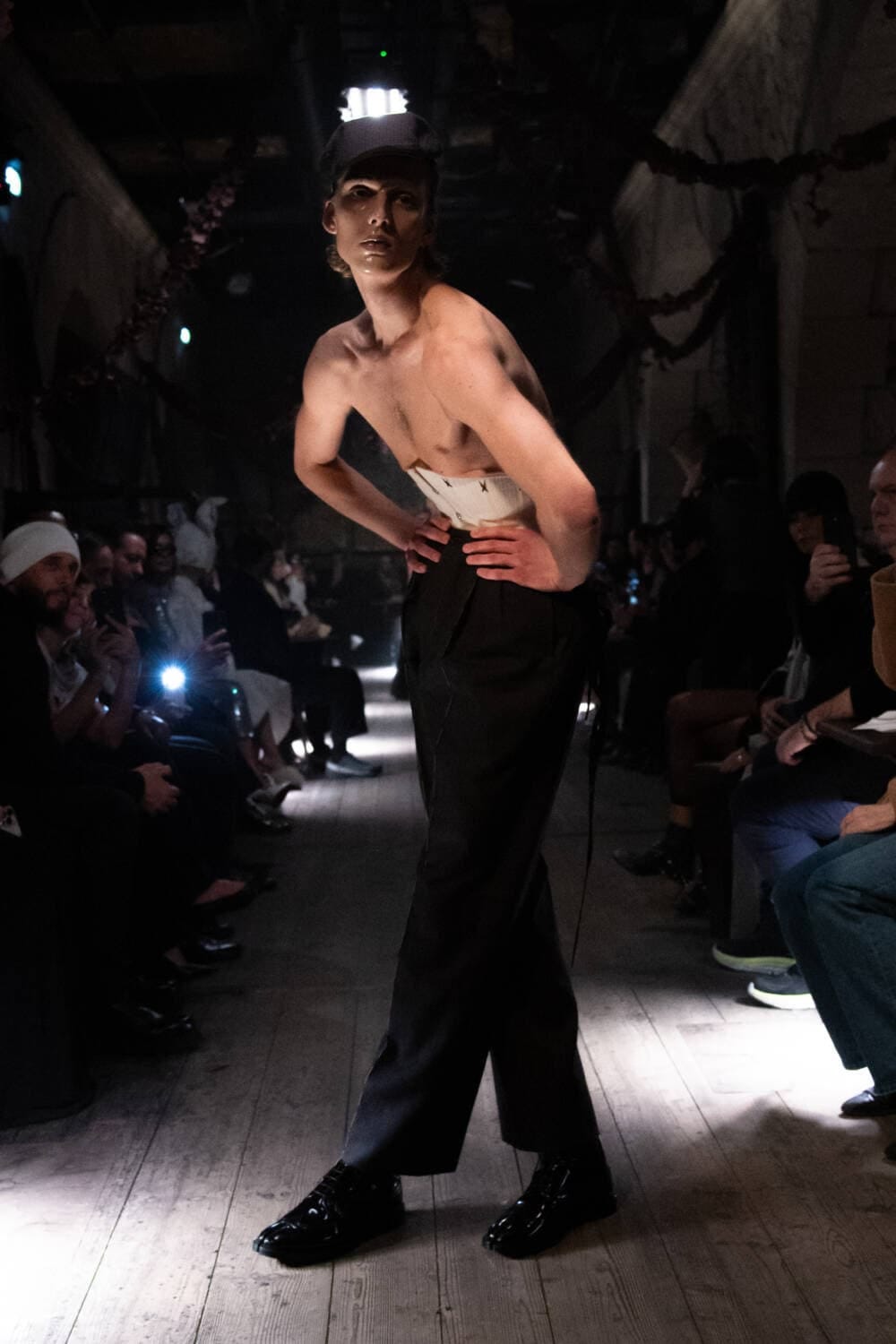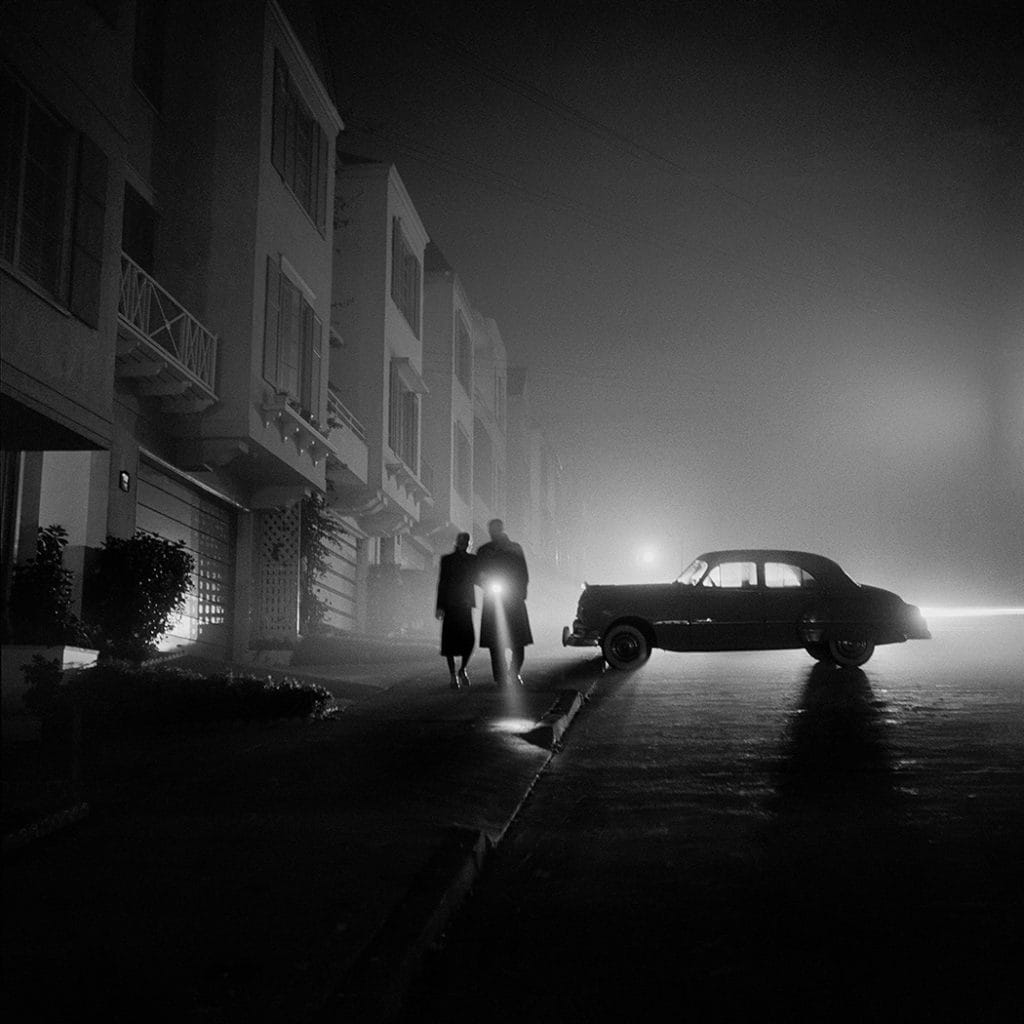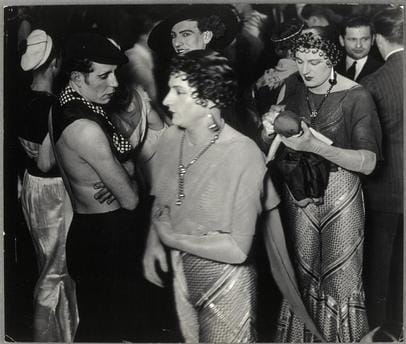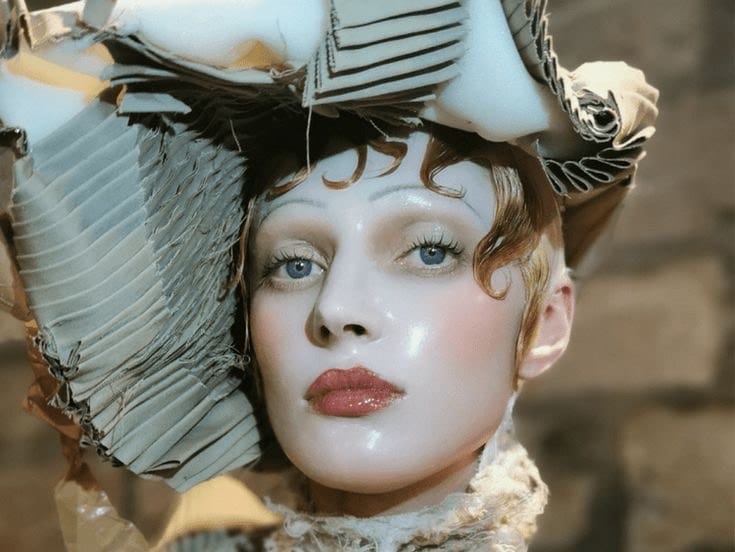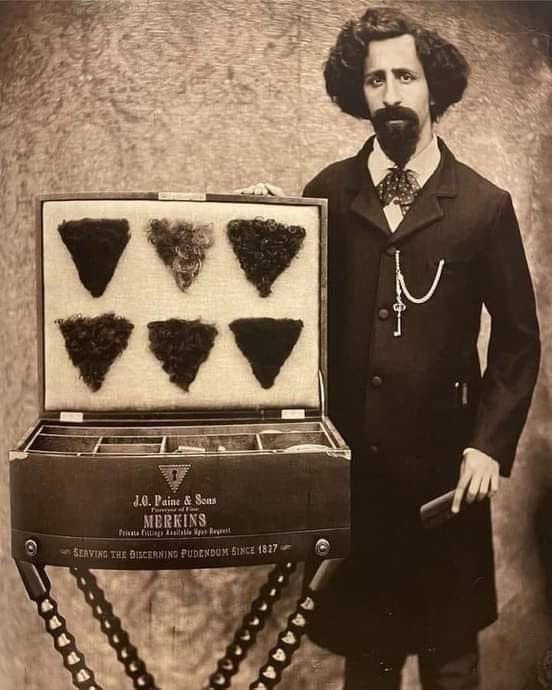John Galliano x Maison Margiela Artisanal Collection Spring/Summer 2024
Planetary Correlations
Uranus-Pluto: Diachronic pattern with the 1450s, 1920s, 1930s, 1960s, and 2020s, evoking scenes and symbols from underground movements.
As the hardcore Anais Nïn stan that I am, I recently rewatched Philip Kaufman's 1990's adaptation of Henry and June, Nïn's diary excerpts-turned-book that covers her infamous affair with both Henry Miller and his wife June during 1931 and 1932 in Paris. I was left wondering about the glorious world of the countercultures and artists in the city during the 1920s and 30s, and how inspiring it must have been to be there. It seems, however, I'm certainly not the only one.
Last January, John Galliano presented an artisanal collection in show format for Maison Margiela, something that had not been done since the Spring 2020 show. And, for the first time in years, a haute couture show was so profoundly beautiful and amazing that it made us feel something.
The overall theme of the collection, as said by Maison Margiela, was "the ritual of dressing." How it is a form of emotion and how it helps reflect the inner character we want to portray to the world.
The opening look of the show was that of a shirtless male model, wearing only a pair of black wool trousers, a page boy cap and a white corset. The model, Leon Dam, is famous for his iconic walk from previous Margiela shows, as well as for his role of being Galliano's muse. Not only Dam's movements but all the models in the show portrayed a powerful, alive and theatrical performance. As YouTuber Luke Meagher (also known as HauteLeMode) says of the show's movements, "[they] really refused to play into the skulking, straightforward, emotionless walks we are so used to in fashion shows nowadays." This is the first, but certainly not the last, Uranus-Pluto aspect of the show.
“When Leon runs underneath the Point Alexandre the third bridge-tunnel, you feel like he’s running from something or someone because he’s like really sprinting and when he stops, he takes really deep gasping breaths,” says Meagher. “You feel like you’re watching somebody maybe in fear of their lives or in desperation because like why else are you running like that? Yet, once he catches his breath, his stance and his walk suggest not terror or alarm but strength, glamour and kind of a ferocity,” he adds. What do both of these attitudes of fear and glamour signify, anyway?
For this collection, Galliano was highly inspired by the Hungarian French photographer Brassaï, who, during the 1920s and 30s, captured the streets and the underbelly of Paris at night. His pictures evoked a sort of hazy, dim, and seedy setting and subject. As Meagher points out, however, "Brassaï’s documenting of this side of Paris also brought it to light, as some of his work portrayed realistic portrayals of sex workers or lgbtq gatherings.”
As we see in the opening look–Leon Dam, a man in the 1920s and 30s wearing a corset–would not be looked upon kindly, not even in a city as progressive as Paris is and was. Hence, as we see in the photographs of Brassaï, lgbtq people would meet in bars and clubs, which allowed them to be fully themselves. Brassaï is known to have showcased same-sex couples dancing and being together, as well as people crossdressing. "But," says Meagher, "the brilliant thing about Brassai’s work is it never vilifies its subjects, rather it just documents them, showcasing how, even if you don’t belong to that world, you could find something that you could relate to."
As pointed out by Meagher, it seems like Leon's opening look in the show might be based on either two (or both) of Brassaï's pictures (both shown above). The first being that of a couple dancing together, with one in full dress and the other in a similar image to Leon. The second (and the one I feel resembles the look the most), is that of two men standing, one shirtless but with pants on and the other one wearing a jacket but no pants.
“This idea of a man wearing corsetry and being in the underbelly of Paris might have been why he began to run, and when he felt safe, began to, as we say, give it to the girls,” says Meagher. “In my opinion, it is a fantastic depiction of the duality of being queer: the fear of being othered and how that can harm you and also the ability to have great courage and strength that can be demonstrated to the outer world, almost like armor,” he adds. This is all very Uranus-Pluto.
The Uranus-Pluto archetype is typically associated with queerness and gay rights. This is because Uranus, the principle of eccentricity, freedom and rebellion against the status quo, is joined by Pluto, the principle of power, sex, and the taboo. Uranus and Pluto together create an intense revolutionary energy that quite accurately correlates with both, counterculture and the lgbtq community. In fact, the gay liberation movement began during the 1960s Uranus-Pluto conjunction (we see a lot of counterculture rising during this time as well). The queer and/or eccentric (Uranus) is being empowered (Pluto) during these transits.
In fact, during the 1920s and 30s, when Brassaï was capturing the underbelly of Paris, Uranus and Pluto were in alignment. In the 1920s (from 1917 to 1926, specifically), Uranus-Pluto were in a trine, and in the 1930s (from 1928 to 1937, specifically), Uranus-Pluto square. We can definitely see many characteristics of this archetypal combination during those periods.

For the second look, we see a beautiful black muslin sheer gown with black chantilly lace that creates a sort of reptilian motif across the model's body. The dress is fully sheer and exposes a significant part of her body. Here, once again, we witness Brassaï's influence. “An image titled A Monastic Brothel from 1931 shows the inside of a brothel with a man in full suit, dancing with a woman who is wearing a completely sheer slip dress that exposes everything, including the crack of her bottom,” explains Meagher. Interestingly, the naked dress trend has been correlated with the Uranus-Pluto cycle. Either way, Brassaï's constant documentation of sex workers and their nudity seems to be an influence here.
Perhaps the most well-known aspect of the show is the iconic makeup looks created by notable makeup artist, Pat Mcgrath. Pat created this wet, porcelain-like skin base that has never been done before, and left everyone wondering how she had done it (to this day, we're not completely sure). These makeup looks immediately went viral after the show, which is something that can perhaps be attributed to the current Jupiter-Uranus conjunction (virality is one characteristic of this transit).
“The fact that the models looked wet (a theme throughout the show) might also have to do with Brassai’s method of photographing Paris at night, but also in the rain, because it would allow his lighting to work properly and get that whole misty effect,” says Meagher. “When coupled with the hairstyles done by the hair stylist Duffy, with discs of frizzy hair, it further enhanced the full rainy weather effect,” he adds. In all of this, we see a Saturn-Neptune attribute (and it makes sense, as we are collectively beginning to experience the Saturn-Neptune conjunction (0º)). We can think of Saturn (the principle associated with hard materiality) as aiming to capture Neptune's (the principle associated with water) watery quality.
Now, another big inspiration of Galliano for this collection is the work of Madeleine Vionnet, an interesting character in the history of fashion. All throughout the early 20th century, Vionnet aimed to "make clothing for women" rather than what she called "costumes," which is, according to her, what male designers were doing (i.e., Charles Frederick Worth). While she is credited with the invention of the bias cut, she is, in fact, the inventor of the use of the bias cut as the main technique in garment construction. "Vionnet’s love of experimentation saw her take the use of this cutting the fabric diagonally technique and apply it to the body and have it mold the body and form around it, which gives us this liquidy, sexy and silky creations we’ve come to know and love,” says Meagher.
Vionnet and Galliano have a strong connection. For his Fall/Winter 1988 collection, he sent a bias cut dress down the runway after being inspired by one of Vionnet's creations. "At that point, he didn’t know how to construct it so he let somebody else do it,” says Meagher. “From there, he began mastering the technique and, by the mid 1990’s, it was a signature of his and still is,” he adds.

However, it seems like this collection by Galliano is looking to feature some of Vionnet's lesser known styles. As an example, we have her sheer draped chiffon dresses. As Meagher points out, "there were quite a lot of them.” One in particular, yet, seems to be the inspiration for the first few in the collection. “While many might be offput by the idea of nudity in clothing, they aren’t much different from the naysayers of Vionnet’s really early work, when she was working for Dusse way back in the 1910s and 1920s,” says Meagher. "The girlies used to be like ‘uh, it’s like negligée, we don’t really want to sell that to our clients’ and then, Vionnet was like ‘no no, I’ll just start my own brand, bye’,” he adds.
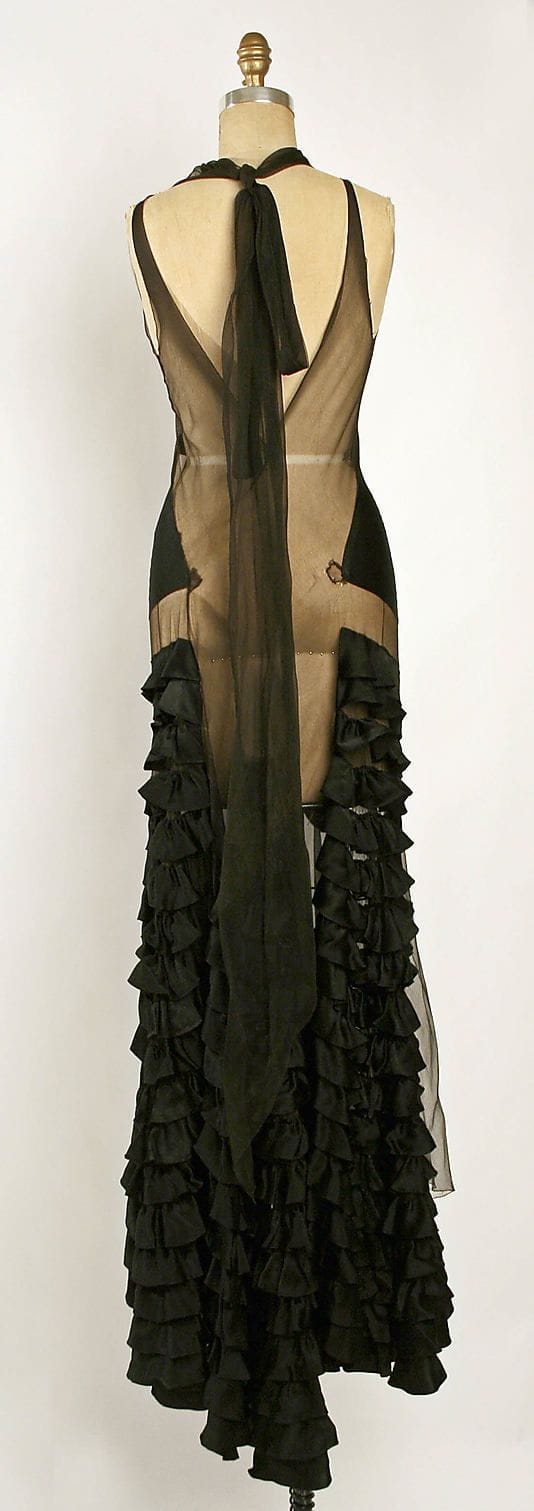
Further down the collection, we have a look consisting of a cardigan and a skirt, the skirt two "moons" along the hips of the model. The thing is, there is a Vionnet skirt from 1925 that features swirls along the hips, similar to that of the these "moons." An interesting synchronicity (perhaps not entirely accidental) is that the show happened the evening of the first Full Moon in 2024.
Interestingly, Vionnet was born with a natal Uranus square Pluto alignment, which adds to the synchronicity of this collection. She was surely revolutionary and cutting-edge for her time, let alone influential.

We also have two dresses in the collection that are both sheer, with two different colorful and anatomical patterns. "Both of the models wear these sheer tulle dresses but one is colored in this gorgeous palette of pinks and murky greens and blues that can sometimes blur into black, while the other is a mixture of orange and black that illuminates a torso motif that then fades to black as it enters the skirt region,” explains Meagher.
The draping technique used on these dresses is called "acuarel" by the Margiela team, as it is based on the way that painters work with watercolors. “With the constant alluding to painting and art, I think the coloring of the tulle also might be influenced a bit by that as well,” says Meagher. "There is mention by the Margiela team, of the early 20th century artists Kees Van Dongen, who was one of the Fauves, who were artists that emphasized bright and vibrant colors in their work,” he adds. Van Dongen, interestingly, was also born during a Uranus square Pluto alignment.

In these dresses, we can also see a Merkin present, something I believe evokes the Uranus-Pluto aesthetic. A Merkin is the idea of showcasing pubic hair underneath a sheer dress. “Galliano was referencing a historical object called the Merkin that came about in the 15th century, when the idea of full pubic bush was highly desired and fashionable, but also, when lice and syphilis caused many to shave their pelvic region for health and safety reasons,” explains Meagher. “From there, people would create pubic wigs with real human hair in order to create the illusion that they had such hair to spare,” he adds. This is something that today, we tend to see as slightly shocking. So is, however, anything that represents the Uranus-Pluto energy, which is what exactly makes the archetype so appealing. “The girls had extensions for the nether regions, to each!” says Meagher, jokingly. It is interesting to note that the Merkin emerged in the 1450s during a Uranus-Pluto conjunction.
"I sing the body electric," writes poet Walt Whitman, born with a natal Uranus square Pluto aspect. All the same, we can thank Galliano for the vitality that this collection left us with.




